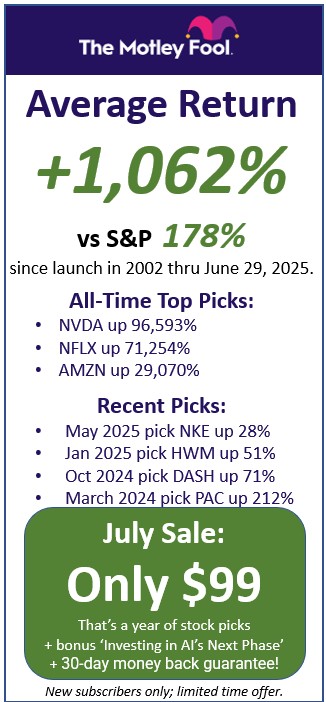Let’s Get Started
Want to know how to invest your first $1000? Smart! Many people think waiting til they have a large sum saved up is a requirement before investing…
Let’s assume you’ve dug up $1,000 from under your mattress and deposited it into a brokerage account. What now? Should you immediately plow it all on a stock that was just featured on CNBC?
No!
Setting up your investment portfolio is kind of like shopping for a new car. Before you look at individual models, you need to first figure out what style suits you best. Are you more of a big picture thinker, or do you revel in the details? Are you a bargain hunter, or do you prefer speedsters?
The answers to these questions determine the investment style that suits you best. Your style tells you the types of stocks you should be targeting as you assemble your portfolio.
How to Invest with Little Money, but a lot of Style
Different styles work for different investors
The Stock Picker
The stock picker is interested in digging into individual stocks and studying the underlying businesses in great detail. Stock pickers generally fall within two strategies, value investing and growth investing. Value investors look for stocks that are valued “cheaply” using a variety of valuation metrics. They hope to profit when the stock appreciates in value until the valuation is in line with the rest of its peers. Growth investors, on the other hand, target stocks in companies that are experiencing rapid growth. They bet that rapidly rising profits will lift stock prices upwards.
The stock picking strategy requires an investor to conduct detailed analysis. Stock pickers need to read research reports and earnings statements. In going through these documents, the value investor will search for catalysts that may will increase the stock’s valuation. Likewise, the growth investor will look for validation that a company is able to sustain its growth rate.
The Sector Strategist
The sector strategist is the big picture thinker that prefers the bird’s eye view of the market. Rather than studying individual stocks, the sector strategist chooses to focus his/her understanding on how industry sectors interact with the economy and one another. Are you more interested in betting on how auto sales will perform in the next 12 months or do you care more about picking the best car maker? If the former, you’re a sector strategist.
The easiest and most cost effective way for the sector strategist to invest is through exchange traded funds, or ETFs. ETFs give investors a quick way to gain exposure to an entire sector without having to buy all the individual stocks within the sector and racking up a mountain of trading costs in the process.
Because these industry relationships tend to take time to play out and you’re investing in baskets of stocks, a sector strategy’s returns tend to be smoother and more gradual in nature. A bad earnings report from a company held in one of the ETFs won’t make a big dent on your returns because of the diversification built into the ETF. Based on these factors, the sector allocation strategy requires less day to day monitoring, which can be a plus for investors with limited capacity to track the market.
Identifying and Monitoring Your Target Stocks

Your selection process should be more sophisticated than this
Once you determine your preferred investment style (it can also be a combination of the two), it’s time to start identifying target stocks for your portfolio. What better way to do this than to emulate some of the legends of investing?
Regardless of the investing style you prefer, evaluating a company is not a trivial task. It requires a comprehensive review of the company’s business model as well as their income statement and balance sheets. Sector level investing is no cakewalk either. In addition to having a grasp of macroeconomics, you also need to learn how one sector interacts with the others and with the broader economy. For example, the auto sector generally rises and falls with the domestic economy, but healthcare stocks are more driven by regulations and legislation.
All this sounds like quite a bit of work huh? Remember that this is your hard earned money that you’re putting on the line! After all, would you consider buying a house without checking the plumbing first?
After identifying your target stocks and conducting your initial research on them, it’s wise to spend some time tracking them first before you pull the trigger and buy.
Why not dive in right away? Following the stock for a bit will give you an idea of its general trading patterns. You’ll gain a better understanding of its day-to-day volatility and whether or not it’s of a magnitude that’s suitable for your risk tolerance.
What’s the best way to follow a stock? Why not add it to your practice portfolio!
Ready for the real deal?
We suggest beginner investors open a free account with Robinhood! Again and again Robinhood continues to impress us. With no cost to open account and zero trade commissions, Robinhood is a no brainer for new investors. Check out our full review here.
FIRST STEPS TO FINANCIAL SUCCESS:
At WallStreetSurvivor, we love with the stock market and we are obsessed with finding the best deals to help us all make more money. Here is our list of the BEST STOCK SERVICES to help you get start investing correctly:
1 - Get Up To $1,000 in FREE Stock with Robinhood! The fastest growing brokerage, Robinhood, just hit 10,000,000 accounts. Why? Because they DON'T charge commission AND they are giving away up to $1,000 in free stock when you open an account. CLICK HERE to learn more about Robinhood.
2 - Not Sure What Stocks to Buy? Get the BEST Stocks Picks! We subscribe to dozens of stock newsletters, and there is one that has outperformed all the rest for the last 5 years. This one service has an amazing average return of 74.63% on ALL of their stock picks the last 3 years. Their recent winners have been stocks like Shopify (SHOP) up 866%, Match Group (MTCH) up 549%, Paycom (PAYC) up 235%, and many others that have doubled in the last 3 years.
CLICK the image below go see their latest offer...

3 - Don't Pay Commission! Open a Real Brokerage Account and Trade Commission-Free. Here's the GREAT NEWS--the brokerage industry is very competitive right now and some brokers are offering FREE COMMISSIONS and other incentives to acquire new accounts. CLICK HERE to get commission-free trades. Or CLICK HERE to get a review of the Best Online Stock Brokers.
4 - Get the Best Stock Picking Newsletter of 2020 We subscribe to dozens of stock newsletters. Some of these newsletters are longer term investing, some are short term, and some are penny stocks. Find the best newsletter for your interests. So which stock newsletters are the best? Visit our review of the best stock newsletters.
5 - Is the Motley Fool a Good Source of Stock Picks? The Motley Fool is probably the best know stock newsletter service. Is it worth it? Read our full Motley Fool Review
